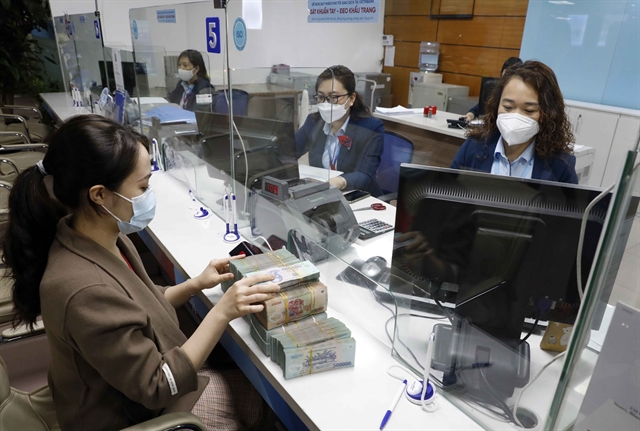
HÀ NỘI — Credit growth has reached 12.97 per cent so far and is likely to hit 14 per cent this year as credit expands very strongly towards the end of the year, the head of the State Bank of Việt Nam (SBV) revealed.
This year, the bad debt ratio has to date edged up to 3.79 per cent, but may reach 8.2 per cent if taking into account restructured debts.
Standing Deputy Governor Đào Minh Tú voiced his concerns over an increase in non-performing loans this year, saying it is one of the big challenges for the banking system in 2022 and the following years.
In a press conference on Tuesday, Tú attributed the increase to the worst-ever fourth wave of COVID-19 in Việt Nam, noting that bad debts are unwanted consequences of the COVID-19 outbreak and can rise even if the pandemic continues to cause trouble to businesses.
This year, the SBV has undertaken measures to improve credit quality, direct credit to production and priority sectors and tighten control on that poured into high-risk areas, such as real estate, the stock market, Build-Operate-Transfer (BOT) and Build-Transfer (BT) transport projects. It has also strengthened risk management on consumer credit and provided enterprises and individuals with broader access to bank loans.
In 2022, Tú said the central bank will continue flexibly governing monetary policy tools in tandem with fiscal and other macro-economic policies to support post-pandemic economic growth.
Remittances up 10 per cent
Vietnamese abroad sent home some US$12.5 billion this year, a year-on-year increase of 10 per cent.
These are official numbers that must be used in reports, Tú emphasised.
About 28 per cent of the remittances to Việt Nam were sent through international money transfer companies, 7 per cent via credit institutions and 2 per cent by post.
The official said though Vietnamese living overseas have been also struggling due to the impacts of COVID-19, they remained devoted to the homeland, affirming that remittances are an important source of capital for Việt Nam at this time. — VNS